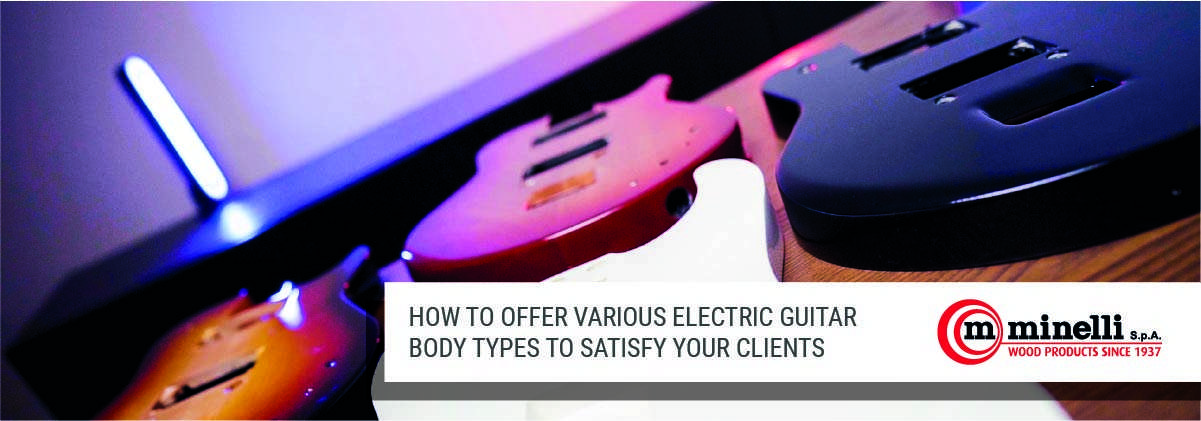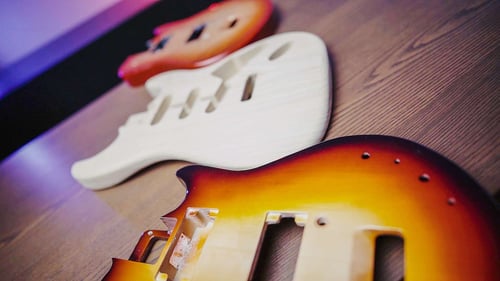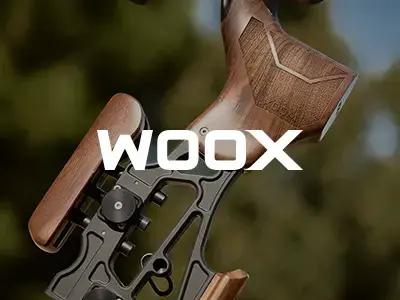 Electric guitar body types greatly influence the instrument’s final tone. How it is manufactured also affects how the guitar resonates and which frequencies it enhances or dampens.
Electric guitar body types greatly influence the instrument’s final tone. How it is manufactured also affects how the guitar resonates and which frequencies it enhances or dampens.
You must offer all of the most famous types of electric guitar bodies in your catalogue to be competitive in today’s demanding market.
Let’s discover the most common body types, their characteristics, and how to find a reliable manufacturer.
The most common electric guitar body types: discover them
Electric guitars are perhaps the most popular instrument in history, so many variations, configurations, and features are available to fit any player.
The first and most important consideration is that not all electric guitars have the same shape, and shape affects the sound. There are three main types of electric guitar bodies:
- solid
- semi-hollow
- hollow
Look at this video to discover some of the most popular designs:
Each one has unique sound characteristics and is typically associated with specific styles. The choice of manufacturer is also fundamental: design differences can produce different sonic qualities even among guitars that have the same shape.
Let’s analyse the three main types of electric guitar bodies.
Solid-body electric guitar
Solid-body guitars are the most common today and are ideal for rock and blues. Les Paul is considered the inventor of the solid-body electric guitar in the 1940s, while Leo Fender started to make them for a broader audience in the 1950s.
These guitars are usually made of a solid piece of wood and do not have any cavities or chambers in them. They are generally more sustainable, which makes them great with distortion.
The most popular solid-body guitar is the Stratocaster, launched by Fender in 1954. This model has been in continuous production for almost seventy years, and its shape and technology have been reproduced by endless brands. Jimi Hendrix, Stevie Ray Vaughan, and David Gilmour are famous players of this type of electric guitar.
Les Paul is another type of solid-body guitar, which takes its name from its inventor. It is mostly associated with the Gibson brand, chosen, for example, by Slash, Jimmy Page, and Paul McCartney.
Look at the video below to have an idea of the most representative Stratocaster tones:
Semi-hollow body electric guitar
Semi-hollow guitar bodies are also very popular, especially among blues, jazz, and rock players.
These types of guitars are chambered, typically in the form of two f-holes on top of the guitar’s body. The inner chamber of the guitar is divided by a block of wood that runs through the body.
A perfect example of this electric guitar body type is the Gibson ES-335, which has been used by Eric Clapton, Otis Rush, Warren Haynes, Dave Grohl, and B.B. King.
As semi-hollow guitars are not made of a solid piece of wood, feedback tends to occur when played at louder volumes or when used with high levels of distortion.
The main difference between solid-body guitars and semi-hollow body guitars is their sound. Solid bodies have a brighter tone and a strong tolerance to amplified volume before feedback. Semi-hollow guitars sound warmer and more resonant but are more prone to feedback problems.
The video below shows an example of the tone of a semi-hollow electric guitar:
Hollow body electric guitars
Hollow body guitars can be considered acoustic guitars that evolved into the electric world in the early 1900s.
These guitars have a bigger acoustic chamber than the semi-hollow bodies.
As a result, they produce a warmer sound and are very appreciated by jazz players. The most popular hollow body guitar is the Gibson ES-175, which is used by such jazz icons as Joe Pass, Jim Hall, and Herb Ellis.
True hollow body guitars sound very similar to semi-hollow guitars and tend to have more feedback.
Below is a video that showcases the different tones you can get with hollow body guitars:
How do you satisfy your clients’ requirements?
Consumers should be able to select the electric guitar body type that best fits their preferences and needs. That is why you should offer them in your catalogue, giving your clients the chance to see and touch them as well as customize them according to their style.
Each guitar must be unique and adapt to the owner’s physical, aesthetic, and sonic requirements. The guitar’s finish is also very important, as appearance is part of its utility. You should be able to offer different electric guitar body styles in line with the specific image players want to convey.
 The choice of manufacturer is therefore crucial
The choice of manufacturer is therefore crucial
Only an experienced team specialized in the timber sector has the competency and tools to create different shapes and designs, ensuring durability, resistance, and functionality while also respecting deadlines and sending products as scheduled.
The best option is choosing a European or U.S. supplier that will let you avoid uncertainty and delays that could affect your commercial activities, ensuring the highest-quality wooden guitars.
You will then be able to satisfy your clients’ requests and be successful in the market.
The Minelli Group and subsidiary Minelli USA have manufactured wooden components for the OEM market for more than 80 years.
We have production plants in both Europe and the U.S., where we can produce electric guitar body types of the highest quality, customizing them on demand according to your and your clients’ needs.
Thanks to our internal research & development department, sophisticated software, and cutting-edge machines, we can produce innovative and inimitable electric guitars while also allowing you to order specific quantities just in time according to your actual demand.
If you need more information, do not hesitate to contact us!






